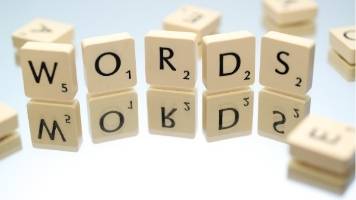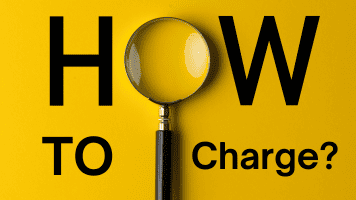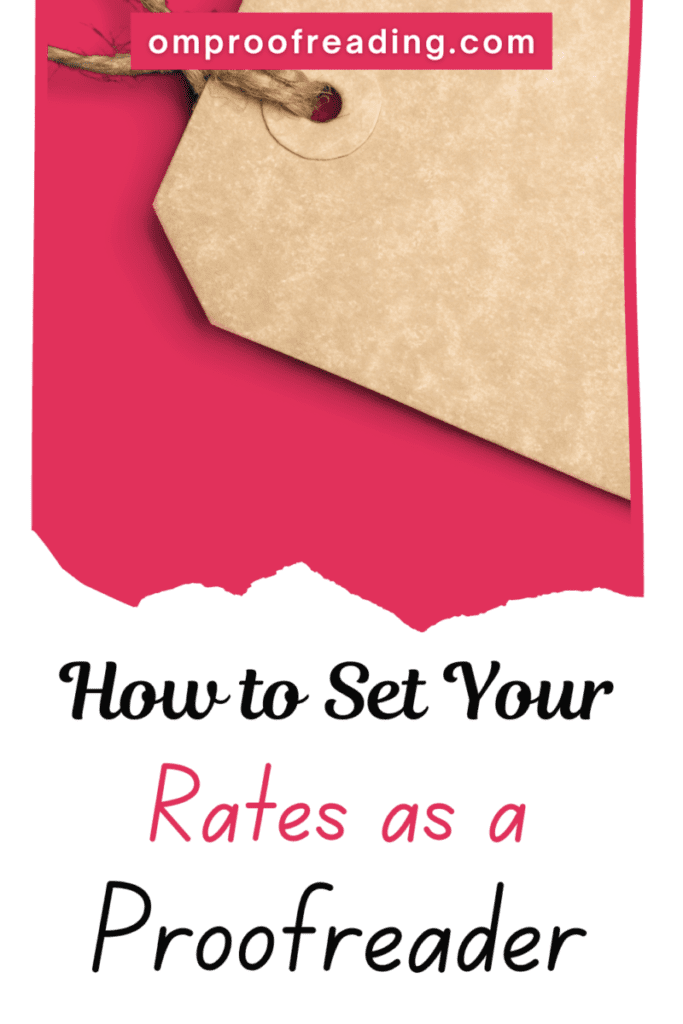This article may contain affiliate links. Please see our affiliate disclaimer in the footer menu for more information. Thank you for your support!

If you’re new to the proofreading scene and wondering how to set your proofreading rates, you’re in the right place! As a proofreader, I can help you figure out your rates depending on your situation.
You can establish your proofreading rates based on the market rate in your country. This rate will likely reflect recommendations made by a leading editorial organization. You also need to consider your training, experience, and the individual text to be proofread.
Setting your proofreading rates requires careful consideration. Let’s see the factors that go into setting rates so you know how to charge clients.
5 Steps to Successfully Set Your Proofreading Rates
1) Get Guidance from Editorial Associations
Proofreading rates are a product of multiple factors. When setting rates, you’ll first want to be aware of the market rate. The market rate in your country will probably be the one you choose to follow. This rate will likely be based on guidelines from a well-established editorial association.
Reputable editorial organizations are where you’ll want to look to get a feel for setting your prices.
2) Look at the Rates of Your Fellow Proofreaders
To determine the market rate, you’ll need to see how other proofreaders from your country charge their clients. Of course, you’ll need to keep in mind that they’ll all have different levels of training, experience, and expertise.
If you’re not yet connected with other professionals in the editorial industry, you can establish these relationships in many ways.
I became connected with colleagues through a proofreading course. The class itself provided useful information about how to determine proofreading prices.
Joining a LinkedIn or Facebook group for proofreaders is another way to get the scoop about rates. You can also use Google to find people from your country who have established their own businesses.
Asking questions in groups like Quora or Reddit can also yield valuable information.
Quora and Reddit are discussion websites where people can ask questions and answer other people’s queries. These websites are organized according to the topics being discussed. You can often find friendly people willing to share info based on their experiences.
3) Decide to Charge by the Word, Hour, or Page
As you gather information about prices, you’ll notice that proofreaders typically charge by the word or by the hour. Now and then, you’ll encounter proofreaders who charge by the page.

You’ll need to decide whether to charge by the word, hour, or page.
I charge by the word, and so do most of my colleagues.
Charging by the word lets the client know the exact price ahead of time, which any client will appreciate.
4) Consider Your Proofreading Training and Experience
You are a significant factor in determining your rates. Two elements to consider are how much job-specific training you’ve received and how much proofreading experience you possess. The more training and experience you have, the more you can charge.
If you have an area of expertise, you’ll want to raise your price for documents in that domain.
Finally, when thinking about rates, remember that you’re a freelancer running a business.
Therefore, you’ll have business-related expenses (insurance, marketing, equipment, etc.) to consider.
Note: Your cost of living may also be a factor in setting your prices. Think about how much living expenses vary from one city to the next in many parts of the world.
5) Assess Each Document Before Determining a Final Rate

I think of the documents I proofread as being like snowflakes since no two are alike. You’ll need to ask a few questions for each text that comes your way.
- What is the genre of the text?
Some genres are easier to proofread than others. For example, writing that falls under the umbrella of social sciences tends to be tagged with a lower rate than writing from the medical field.
- Is the document well written?
You can charge more if you’ll have to make copious corrections because the text is packed with punctuation pitfalls and saturated with spelling slipups.
- What is the turnaround time (TAT)?
If the TAT is tight, you can tag the text with a higher price.
Of course, you want to be sure you have enough time to proofread a document before your client needs it back.
I wrote an article called “How Long Proofreading Takes (A Complete Guide with Tables)” if you’d like to learn about average proofreading paces and more factors that impact a proofreader’s speed.
Proofreading Rates Recommended by Editorial Organizations
Professional organizations for editorial freelancers establish recommended proofreading rates. These associations acknowledge that setting rates depends on a variety of factors.
Let’s look at the rates suggested by four prominent editorial associations.
1) The Editorial Freelancers Association (EFA)
In the United States, the EFA is a widely respected and well-established institution in the publishing industry.
The EFA has a chart that shows the median rate ranges for various editorial services. These rates are not suggestions by the EFA but are based on the results of a 2023 survey given to EFA members.
The proofreading rates chart (below) shows the rates posted on the EFA’s website.
As you can see, the rates vary according to the kind of document.
For example, fiction documents command lower rates than business or medical texts.
2024 Median Proofreading Rates from the EFA
| Type of Text | Per Word | Per Hour | Per Page |
Pages/ Hr |
|---|---|---|---|---|
| Academic, humanities (student) | 2.0¢–4.0¢ | $40.00–$50.00 | $5.00–$10.00 | 7.0–10.0 |
| Academic, humanities (faculty, publication) | 2.0¢–3.4¢ | $40.00–$50.00 | $5.00–$8.53 | 7.0–10.0 |
| Academic, STEM (student) | 3.0¢–5.0¢ | $42.50–$55.00 | $7.50–$12.50 | 6.0–10.0 |
| Academic, STEM (faculty, publication) | 3.0¢–5.0¢ | $40.00–$50.00 | $7.50–$12.50 | 6.0–10.0 |
| Academic, other | 2.0¢–4.1¢ | $41.50–$55.00 | $5.00–$10.25 | 6.0–10.5 |
| Business/ marketing |
2.0¢–4.0¢ | $45.00–$57.50 | $5.00–$10.00 | 7.0–10.0 |
| Fiction | 1.2¢–2.0¢ | $35.00–$45.00 | $3.00–$5.00 | 8.0–14.0 |
| Graphic novels | 1.5¢–2.8¢ | $35.00–$40.00 | $3.75–$6.88 | 9.5–17.5 |
| Legal | 2.0¢–3.8¢ | $40.00–$51.00 | $5.00–$9.38 | 6.0–10.0 |
| Medical | 5.0¢–5.0¢ | $45.00–$60.00 | $12.50–$12.50 | 6.0–10.0 |
| Medicolegal | n/a–n/a | $37.50–$65.00 | n/a–n/a | n/a–n/a |
| Memoirs | 2.0¢–2.5¢ | $35.00–$47.50 | $5.00–$6.25 | 8.0–12.0 |
| Nonfiction | 2.0¢–3.0¢ | $40.00–$50.00 | $5.00–$7.50 | 7.0–11.0 |
| Technical | 2.5¢–4.0¢ | $45.00–$57.00 | $6.25–$10.00 | 6.0–10.0 |
| Other | 2.0¢–3.3¢ | $36.00–$51.00 | $5.00–$8.28 | 6.5–10.0 |
Source: The Editorial Freelancers Association
2) The Chartered Institute for Editing and Proofreading (CIEP)
The CIEP, formerly known as the Society for Editors and Proofreaders (SfEP), is based in the United Kingdom.
They are another widely recognized and highly esteemed organization. The CIEP put out a chart of suggested minimum rates for various professionals working in the publishing industry.
These rates are for professionals with some experience who have received training in the relevant editorial skills. Starting March 1, 2025, CIEP recommends a minimum rate of £30.75 per hour, which is equivalent to about $38.
The CIEP states that these rates differ from rates for employees since they take into consideration the costs associated with running a freelance business:
“The rates assume freelance professionals running their own business and therefore include a factor to allow for costs that an employee does not have to pay but are paid for by their employer, such as holidays and sickness absence, National Insurance, pension provision, continuing professional development (CPD), office space and utility bills, software and subscriptions, and business equipment and supplies.”
– The Chartered Institute of Editing and Proofreading
3) The Association of Freelance Editors, Proofreaders and Indexers (AFEPI)

Based in Ireland, AFEPI is another well-known name in the publishing industry.
They give us recommended minimum rates for editorial services. These rates do not include VAT (value-added tax).
AFEPI’s suggested minimum rate for proofreading is €34 per hour as of May 2024. This comes to about $38.
They also give us loose guidelines for proofreading pace. They suggest a pace of 2,500–4,000 words per hour, depending on the project’s complexity.
4) Editors Canada
Finally, Editors Canada is another big name in the publishing world.
Although they don’t provide suggested minimum rates, they give us guidelines based on specific industries (e.g., trade publishing, academic publishing, corporate communications).
However, the quote below pertains to editors; editors typically make more money than proofreaders. They tell us the following:
“If you would expect to pay an editor $60,000 a year in your industry, you should expect to pay a freelance editor about $60 an hour.”
– Editors Canada
For estimates of how long a specific project may take, Editors Canada recommends the fourth edition of The Copyeditor’s Handbook, by Amy Einsohn and Marilyn Schwartz.
For proofreading a “difficult” text, the authors estimate a pace of 4–6 pages per hour. For a “standard” text, their estimate is 6–9 pages per hour.
Summary of Recommended Minimum Hourly Proofreading Rates
| Editorial Organization | Minimum Recommended Rate (per Hour) |
|---|---|
| Editorial Freelancers Association | $35* |
| The Chartered Institute for Editing and Proofreading | $38** |
| The Association of Freelance Editors, Proofreaders and Indexers | $35** |
**rate converted to dollars at the time of writing
To determine your base proofreading rate, I recommend following the suggestions of the leading editorial organization in your country.
You should also pay attention to what other proofreaders in your country typically charge for their services. No matter where you live, you need to have a good idea of the market rate for the service you’re offering.
Many beginner proofreaders charge a base rate of $.01 per word. I’ve created the chart below to give you an idea of what this rate looks like when applied to documents of varying lengths.
The Price for Proofreading Documents Based on a Rate of $.01 per Word
| Word Count of Text | Price to Proofread Text |
|---|---|
| 250 (1 page) | $2.50 |
| 500 (2 pages) | $5 |
| 750 (3 pages) | $7.50 |
| 1,000 (4 pages) | $10 |
| 2,000 (8 pages) | $20 |
| 3,000 (12 pages) | $30 |
| 4,000 (16 pages) | $40 |
| 5,000 (20 pages) | $50 |
| 10,000 (40 pages) | $100 |
| 25,000 (100 pages) | $250 |
| 50,000 (200 pages) | $500 |
| 75,000 (300 pages) | $750 |
| 100,000 (400 pages) | $1,000 |
Charging by the Word, Hour, or Page
Proofreaders must decide if they’ll charge clients by the word, page, or hour.
Most proofreaders charge by the word, but some prefer to charge by the hour.
Occasionally, you’ll come across a proofreader who charges by the page.
Charging by the Page Is Not Popular
The problem with charging by the page is that, depending on font size and type, line and paragraph spacing, margins, etc., a document’s pages can look quite different from one client to the next.
Proofreaders usually avoid charging by the page to eliminate this ambiguity.
Charging by the Hour Can Be Helpful

Charging by the hour can ensure you get paid for any extra time you put into completing a project. Usually, when a proofreader charges by the hour, they first give the client an estimate of how much the project will cost based on the amount of time they think it will require.
Charging by the hour is a method that usually makes the most sense for experienced (but not beginner or expert) proofreaders.
If you begin your proofreading career charging by the hour, it will likely benefit you but adversely affect your clients.
As a new proofreader, you’re likely to be a slow proofreader. Also, you’ll probably underestimate the time needed to work through a document. Therefore, your clients will end up paying more than what you originally quoted if you let them know about the extra time it took.
This may put clients off, especially if they’re paying significantly more than they initially anticipated.
As a beginner proofreader, you want to gather terrific testimonials and build a solid base of repeat clients. Charging by the hour means you could inadvertently alienate your clients. And that’s the last thing you want!
If you charge by the hour as an expert proofreader, your clients will be delighted.
They’ll get to capitalize on the fact that you’re probably able to proofread their documents much faster than most proofreaders but with the same degree of accuracy.

At this point in a proofreader’s career, they deserve adequate compensation for the expertise they’ve developed over the years.
Therefore, experts will need to set a relatively high hourly rate, which could be a turnoff for some clients. They may be better served to charge by the word.
Charging by the Word Is Wise
Charging by the word is the most popular strategy. It’s how I charge my clients, and most proofreaders I know charge this way too. The advantage of this method is that you and your client are clear about the project’s cost from the beginning.
Your client will appreciate knowing the price up front, and you won’t have to worry about going back to them to ask for more money if the project takes longer than you originally calculated.
Proofreaders know that no two texts are alike, so you may need to adjust your per-word rate if the document requires a myriad of corrections.
Calculating proofreading costs by the word means you’ll quickly learn to accurately assess the amount of work needed for a text. Well, I say quickly. I still struggle now and then to estimate how much polishing a document needs—but I’ve gotten a lot better! (I tend to underestimate the time I’ll spend on a project.)
Feel free to experiment with methods of charging until you find the one that makes the most sense for you.
Of course, you want to be fair to the client, but you deserve to be paid sufficiently for your eagle-eyed work.
Six Factors to Consider When Setting Proofreading Rates

1) How Much Training and Experience Do You Have?
Of course, you (the awesome proofreader) are part of the equation when determining rates. Here are a few questions to ponder when coming up with rates:
- What kind of education and training contributed to developing your skills as a proofreader?
- Do you have a degree in English or journalism? (If you don’t, don’t worry!)
- Did you complete a comprehensive proofreading course?
- Did you pass an exam at the end of the class?
Getting additional training is one way to boost your earnings a bit.
If you’d like to explore other ways to put more pennies in your pocket, I encourage you to read my post “8 Great Ways for Proofreaders to Make More Money.”
As we know, how much experience you have is also a relevant factor.
- Is this your first week on the job?
- Have you been a part-time proofreader for a couple of years now?
- Has proofreading been your full-time job for the past 10 years?
Where you fit on the experience continuum will influence your base proofreading rate. The more experience you have, the more you can charge.
2) Are You Proofreading a Document within Your Area of Expertise?
Another consideration is not just how much experience you have but what kind of experience you possess.
- Do you have experience working in a publishing company?
- Were you a proofreader for an online proofreading company specializing in academic documents?
You can charge more when proofreading a text within your area of expertise.
Many proofreaders choose a niche based on their knowledge and interests.
If you’re already an expert in your niche, you can command higher prices when proofreading documents related to that niche.

If you’re not an expert in your niche, you’ll eventually become one with enough time and practice. Of course, some niches (e.g., medical, scientific, technical) require expert-level knowledge from the get-go, while you can step into others with limited know-how.
If you’d like to learn more about choosing a proofreading niche, please check out this article on Om Proofreading.
As we know, proofreaders vary in their interests. Occasionally, they may take on a lower-paying project because they’re fascinated by the subject matter.
Considering I’m a peace-loving vegan who has proofread documents about war strategy and dry-aged beef, I can appreciate taking on a project I’m enamored with, even if it pays less than what I’m used to. 😊
3) What Is the Cost of Living Where You Reside?
Although not everyone considers this a factor, it does matter. For example, in the US, the cost of living varies widely depending on which city you live in.
The cost of living in McAllen, Texas, pales in comparison to the money you’ll fork over while residing in San Francisco, California.
Also, be sure to take your business expenses into account.
Since you run your own business as a freelancer, you need to consider all the costs that aren’t covered by an employer: equipment and software, insurance, marketing, administrative tasks, etc.
If you’re curious about what I mean by “administrative tasks,” I’m referring to responsibilities like project management, tracking business income and expenses, and reminding clients about payments.
If you need help growing and managing your business as a freelancer, I highly recommend The Freelancer’s Bible: Everything You Need to Know to Have the Career of Your Dreams―On Your Terms by Sara Horowitz and Toni Sciarra Poynter. Horowitz is the founder of Freelancers Union.
I own this book and have found it to be an excellent resource.
4) What Is the Genre of the Document?

We’ve already seen the editorial rates from the EFA that demonstrate how a document’s genre affects the proofreading price.
It’s also important to note that medical, scientific, and technical texts demand higher rates than most other genres because of the expertise required to work on them.
5) Is It a Well-Written Text?
It’s essential to know what kind of shape a document is in so that you can set an appropriate rate. Typically, the proofreader will ask the client to send the entire document if it’s short. After examining it, they’ll give the client a rate quote.
However, for longer texts (e.g., a book manuscript), the proofreader does a sample edit—meaning they proofread a few pages.
Most proofreaders charge a fee for this service. The sample edit allows the proofreader to give an appropriate quote for the whole document. It also lets the client see how the proofreader works and the value they’d bring to the table.
It’s essential to ask the client for a sample from the middle of the text because the beginning and end of a written work tend to be more polished.
If you’re not comfortable giving a quote from a short sample, you can ask for a longer sample or ask to see the entire document.
Top-Notch Tip: Make sure each client understands what proofreading entails. People outside the editorial industry often misunderstand what proofreading, copyediting, and editing mean.
In my proofreading career, I’ve received written works that were quite polished from the get-go, works that I had better get going on because they were chock-full of errors, and everything in between.
When a document is riddled with mistakes, it’s likely to need more than proofreading.
If that’s the case, it’s your responsibility as the proofreader to let the author know. If you’ve been trained to do the level of editing (copyediting, line editing, or developmental editing) that the text requires, you can offer to do that—for a higher price, of course.
If the error-riddled document has blunders that fall within the realm of what proofreaders fix, you can take it on—but again, for a higher price.
You’d want to charge more than your base rate to account for the fact that you’d be making far more corrections than usual to this text that’s gonna take a ton of tidying!
6) What Is the Turnaround Time?

Turnaround time is a significant factor in determining rates. If you check out the rates charged by online proofreading and editing companies, you’ll see that clients with a tight TAT pay a hefty premium.
For example, let’s pretend I’m an author with a 1,000-word document I need copyedited and proofread. I can submit my work to PaperTrue—an online company that offers professional copyediting and proofreading services.
They’ll take on my text, and I assume they’ll do a great job! However, the price will vary significantly depending on when I need the document returned.
Here’s how much it would cost, depending on how quickly I need my work back.
PaperTrue’s Rates Based on Turnaround Time
| Turnaround Time | Price |
|---|---|
| 12 hours | $55 |
| 1 day | $42 |
| 2 days | $33 |
| 3 days | $30 |
| 7 days | $28 |
As you can see, TAT matters!
You’ll want to charge more for clients who have a tight TAT.
When I offered proofreading services on Fiverr, I charged clients more if they needed their documents back in 24 hours or less. (They knew about the extra fee ahead of time.)
Some proofreaders also increase the price if they’re required to work on weekends or holidays.
I hope this guide has given you useful advice for determining your proofreading rates. I wish you joy as you use your eagle eyes to make people’s writing shine!
If you’re interested in looking for your own clients, you may want to read my article about methods for proofreaders to get customers.
Related Questions
How many pages is 1,000 words?
According to the Editorial Freelancers Association, the industry standard for one manuscript page is 250 words. Therefore, 1,000 words is four pages. That means a 10,000-word document is forty pages long.
How long does it take to proofread 1,000 words?
It takes about 15–40 minutes based on the median proofreading paces reported by members of the EFA. It’s a wide range. For an easy-to-read fiction text, it could take around 15 minutes. But for a highly technical medical document, it could take up to 40 minutes.
How much can a freelance proofreader earn?
ZipRecruiter reports that as of February 2025, the average annual salary for a freelance proofreader in the United States is $57,520. This equates to $28 per hour. However, the yearly pay can range from as low as $28,500 to as high as $91,500, with most freelance proofreaders earning $42,500–$70,000 per year.
For a more in-depth answer to this last question, please see my article about how much proofreaders earn. This post tells you about one commonly overlooked factor you’ll want to consider if you’d like to earn as much money as possible as a proofreader. And I’m guessing you do! 😉
Best wishes to you!
“Success is liking yourself, liking what you do, and liking how you do it.”
– Maya Angelou

Recent Posts
Punctuation is important because it enables us to communicate our message clearly and effectively. Without punctuation, we wouldn’t understand how units of a sentence relate to one another or how...
Although you're probably somewhat familiar with adverbs, you may be unaware of sentence adverbs. As a trained proofreader who has studied the parts of speech, I can help you understand this unique...
